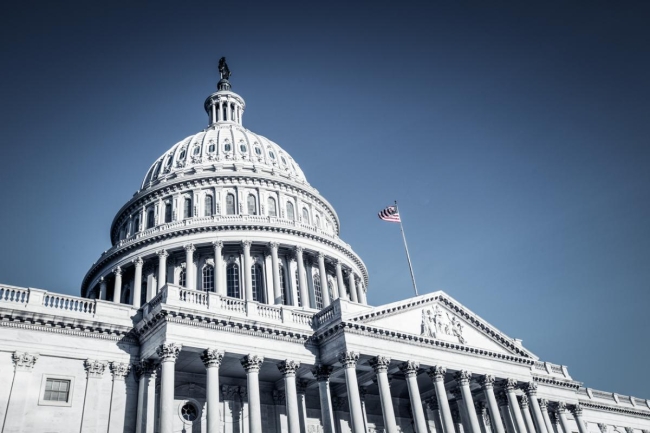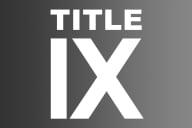You have /5 articles left.
Sign up for a free account or log in.

Some members of Congress are trying to codify changes to the Public Service Loan Forgiveness program that would make it easier for teachers, social workers and other public service workers to get debt relief.
The Simplifying and Strengthening PSLF Act would codify many of the changes made through the temporary PSLF waiver that streamlined the application process for borrowers while also shortening the length of time a borrower must work in public service from 10 to five years.
The waiver was announced by the Biden administration in late 2021 and was designed to eliminate bureaucratic red tape that made the program confusing and inaccessible to eligible borrowers working in public service jobs like teaching, nursing or military service. The waiver is only temporary, however, and is set to expire at the end of October.
The waiver has thus far proven to be successful at making the PSLF program more accessible. Since its creation, it has transformed PSLF from a program with a 98 percent rejection rate on loan forgiveness to a program that has thus far forgiven $7.3 billion in student debt from 127,000 borrowers. Before the start of the waiver, only about 16,000 borrowers had been approved for forgiveness under PSLF.
“With a ticking clock on the waiver program, there should be, in my opinion, a growing concern and receptivity to extending the benefits of the [waiver] for people to get the discharge that they qualify for under the law,” said Representative Joe Courtney, a Democrat of Connecticut and the sponsor of the House companion bill, in an interview with Inside Higher Ed. The original bill was introduced by Democratic senator Sheldon Whitehouse of Rhode Island in May. Courtney introduced his identical version of the bill in the House Education and Labor Committee on July 12.
The waiver received harsh pushback from congressional Republicans like the ranking member of the House Education and Labor Committee, Representative Virginia Foxx of North Carolina, who said at the time that reforms should be targeted at reducing the amount of debt taken on by college students.
Republicans in Congress, however, have long voiced the view that changes to student loan programs should come from Congress, not from the Department of Education.
On the bill, Foxx said, “Representative Courtney’s bill would turn PSLF—which already costs taxpayers $30 billion, an amount that doesn’t account for Biden’s expansive regulations—into the most regressive federal program in history.”
The ranking member of the Senate Committee on Health, Education, Labor and Pensions, Senator Richard Burr of North Carolina, suggested an alternative course of action. He said in a statement, “Instead, the administration should work with Congress on existing, bipartisan proposals to simplify student loan repayment programs to give borrowers greater flexibility and certainty.”
If the bill is passed before the start of Congress’s August recess, it would help the nearly 20.2 million workers in public service jobs fast-track their path to debt forgiveness. Public service workers typically earn lower wages than other college-educated individuals, and the relief provided by PSLF has been described by many individuals who have received PSLF as life-changing.
Ange Zaytsev, a librarian at the University of Michigan who will reach the 10-year repayment requirement by October 2023, at which time she will be eligible to have her student debt discharged through PSLF, described the impact that it is likely to have on her life in an interview with Inside Higher Ed. Zaytsev took out $100,800 in federal student loans to complete her graduate education at the University of Michigan, where she has worked since earning her degree.
“When my student loans are forgiven, that is going to give me so much more room to breathe,” said Zaytsev. “Right now I feel like I am one or two paychecks away from complete financial disaster. So having my student loans forgiven is just going to have this incredible psychological impact on me, and it frees me up to consider working elsewhere.”
Organizations lobbying for the rights of public service workers, such as the American Federation of Teachers, the Peace Corps and the Military Association of America, have voiced support for the bill. The bill also has strong support from Democrats in the House Education and Labor Committee, including Representative Alma Adams of North Carolina, chair of the House Subcommittee on Workforce Preparation.
“The debt is too damn high, and that is why it is especially egregious that the federal government isn’t keeping its promises to public servants,” Adams said in a statement on the bill. “Our bill, the Simplifying and Strengthening PSLF Act, ensures we keep the promise to our public servants by codifying administrative fixes made by the Biden Administration. At a time when so many students and borrowers are awaiting debt relief, we must honor our promises.”
Courtney is hopeful that the looming deadline for the end of the PSLF waiver on Oct. 31 and the impending lift on the pause on student loan payments on Sept. 1 will push Congress to pass the bill speedily.
“The clock is the enemy also in terms of the session,” said Courtney.
The Education Department recently proposed changes to the PSLF program that would further simplify the application process by creating a system to automatically track borrowers’ eligible payments. It would also allow borrowers to automatically be reconsidered for the program if denied, whereas currently borrowers would have to attempt the lengthy application process over again.
These changes, however, are currently being reviewed through a 30-day public comment period, and the earliest they could go into effect is July 1, 2023, if the proposed regulations are approved by Nov. 1. The department has not yet expressed whether it intends to extend the temporary PSLF waiver. If passed, the changes made to the program through the Simplifying and Strengthening PSLF Act would go into effect immediately and would fill a gap between the end of the waiver and the reforms to the program proposed by the department.








